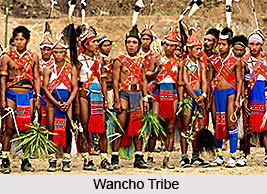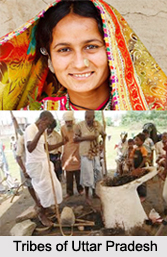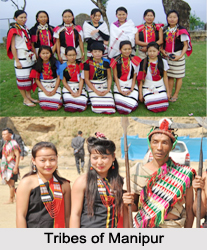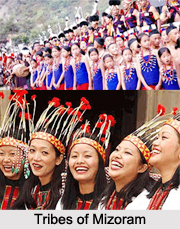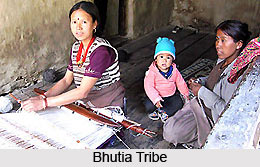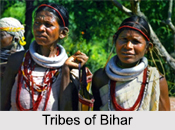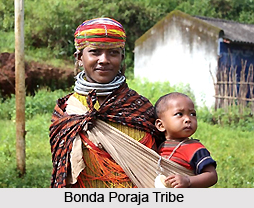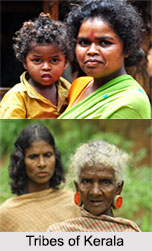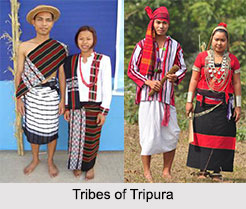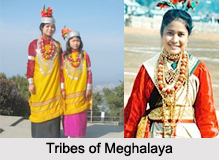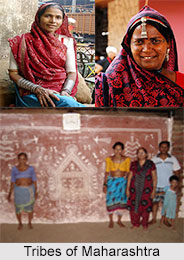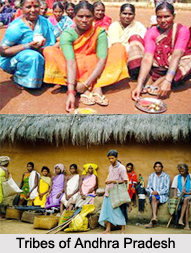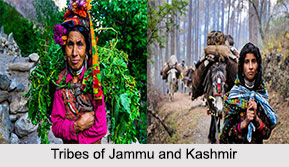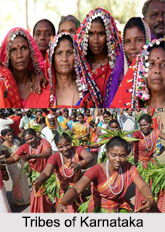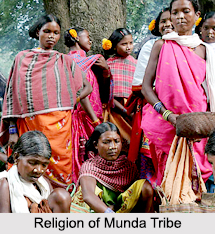 Religion of Munda Tribe refers to the worship of the different deities and spirits according to their hierarchy. Munda, the tribal community from Eastern India, are residents of West Bengal, Chhattisgarh, Bihar, Jharkhand, Assam and Odisha.
Religion of Munda Tribe refers to the worship of the different deities and spirits according to their hierarchy. Munda, the tribal community from Eastern India, are residents of West Bengal, Chhattisgarh, Bihar, Jharkhand, Assam and Odisha.
Deities of Munda Tribe
The Munda tribal group worship several spirits. The position, activities and personality of the bongas of all the groups are discussed below:
Sing Bonga
Sing Bonga is regarded as the head of all the bongas and is believed to be the creator of this universe, as well as its ruler. He appoints all other bongas to take care of the human beings and other animals. He is thought to reside in the Sun and hence known by the name "singi", the sun.
Sing Bonga is usually invoked by the Mundas during the time of crisis, serious disasters or general outbreak of epidemics and other calamities. According to the Mundas, Sing Bonga resides on a high banyan tree and writes the fate of people on the banyan leaves. When a child is born, a leaf is ceremoniously dropped and his entire life is guided by the banyan leaf.
Desauli Bonga
The Desauli Bonga is believed to reside in the Sarna tree, while others say that he lives in the rocks. When the witch finder detects that he has caused some diseases, the villages worship him to appease him.
Chandi Bonga
The word Chandi is believed to have been derived from the Hindu religion. Here goddess Durga or goddess Kali is identified with the name Chandi bestowing valour and strength to her followers. It is believed by some that it resides in the Sarna while others believe them to be field dwellers. Chandi bonga is mostly related to the witches.
Ora Bonga
Ora Bongas are regarded as the household Gods or the ancestor spirits residing in a corner of the house called Ading. It is believed by the Mundas that after the death of a man his gir, i.e. the life substance, goes to Sing Bonga. There it loses its identity and again is transformed into another individual while the dead moves to the world of the Ora Bonga. It is also thought that after the death, the character of the deceased moves round the dead body or the house until the Umbel Adar, a particular rite, is performed.
Ikir Bonga
The word Ikir means pool or pond. Hence, Ikir Bonga means that spirit who resides in a pool or pond. Death ensuing from drowning results in the form of Ikir Bonga. It is said that Ikir Bonga was a benevolent spirit and resided in the depths of pool and ponds. Initially it protected people from drowning, but with time, under the influence of witchcraft he changed into the most notorious spirit. The sacrifice of a single fowl helps in appeasing him. The spirits like Karam Bonga, Hankar Bonga, Nasar Bonga, etc. are the different forms of Ikir Bonga.
Marang Bonga
The word Marang means great, hence Marang Bonga is a great spirit. It is believed that he dwells on high hills and mountain tops. He is less likely to be infuriated and hence if promises made to him are not fulfilled in due time he is not raged.
Bakri Bonga
Bakri Bonga does not occupy any significant position among the Bonga. He is regarded as the most gentle and the simplest of all the bongas. His abode is the family garden and he prefers the sacrifices to be offered there.
Banita Bonga
Banita Bonga remains under the control of magicians and the soothsayers. Banita Bongas encompass a class of some tutelary spirits who are summoned by witches and inflict illness and other diseases on the people. To get rid of any disease a fowl, some rice or some other items as prescribed by the Mati, is given to him.
Baran Bonga
Baran Bonga is one of the most feared bongas of the Munda pantheon. He does not have a permanent residence and is thought to wander in the village, woods, rivers, hill tops and other places. Deemed to cause illness and disease, he is nicknamed as "Rog Bonga".
